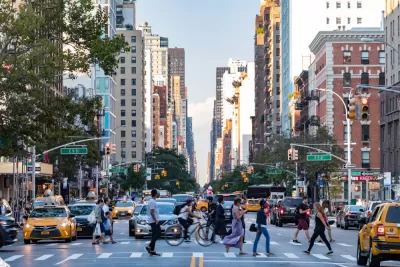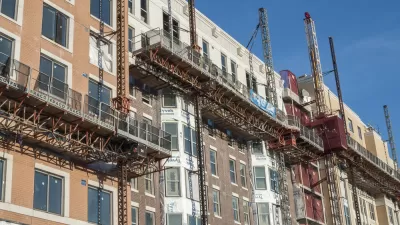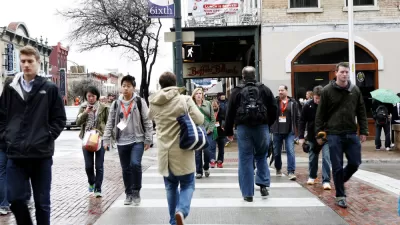Reports of the city’s death have been greatly exaggerated, according to new research from Smart Growth America.

Smart Growth America’s 2023 Foot Traffic Ahead (FTA) report firmly debunks the “death of the city” predicted during the pandemic. According to the report, “the city endures, and across most metros, grew walkable urbanism.”
The report examines changes in walkability in the nation’s 35 largest metropolitan areas, how that has impacted local housing costs, and “provides policymakers with recommendations on how to increase both the supply of and access to equitable, walkable development while safeguarding affordability.”
FTA finds that walkable urban places remain highly desirable, provide the most economic opportunity, and have a range of other benefits, but limited supply means many of these places are increasingly unaffordable for many Americans. “The major reason for the high walkable urban price premiums is the artificial constraint on walkable urban land availability,” the report states, blaming restrictive zoning for much of the problem.
Walkable urban areas have the potential to improve community health by promoting physical activity, can reduce emissions by decreasing car use, and can advance equity by bringing access to economic opportunity. It is critical that people of all backgrounds, especially those historically disadvantaged by racist land use, housing, and lending policy, have access to walkability and all the benefits associated with it.
The report recommends that policymakers focus on increasing the supply of walkable communities, reforming outdated zoning, planning for the impacts of climate change, and protecting affordable housing.
See the source article for a link to the full report.
FULL STORY: Foot Traffic Ahead

Maui's Vacation Rental Debate Turns Ugly
Verbal attacks, misinformation campaigns and fistfights plague a high-stakes debate to convert thousands of vacation rentals into long-term housing.

Planetizen Federal Action Tracker
A weekly monitor of how Trump’s orders and actions are impacting planners and planning in America.

In Urban Planning, AI Prompting Could be the New Design Thinking
Creativity has long been key to great urban design. What if we see AI as our new creative partner?

Pedestrian Deaths Drop, Remain Twice as High as in 2009
Fatalities declined by 4 percent in 2024, but the U.S. is still nowhere close to ‘Vision Zero.’

King County Supportive Housing Program Offers Hope for Unhoused Residents
The county is taking a ‘Housing First’ approach that prioritizes getting people into housing, then offering wraparound supportive services.

Researchers Use AI to Get Clearer Picture of US Housing
Analysts are using artificial intelligence to supercharge their research by allowing them to comb through data faster. Though these AI tools can be error prone, they save time and housing researchers are optimistic about the future.
Urban Design for Planners 1: Software Tools
This six-course series explores essential urban design concepts using open source software and equips planners with the tools they need to participate fully in the urban design process.
Planning for Universal Design
Learn the tools for implementing Universal Design in planning regulations.
planning NEXT
Appalachian Highlands Housing Partners
Mpact (founded as Rail~Volution)
City of Camden Redevelopment Agency
City of Astoria
City of Portland
City of Laramie





























